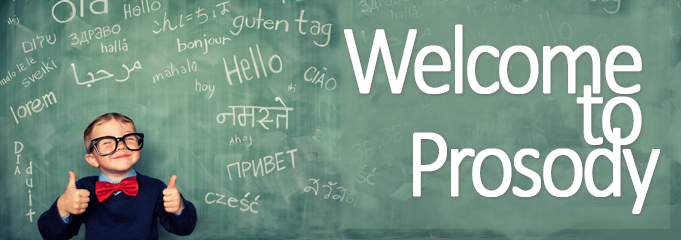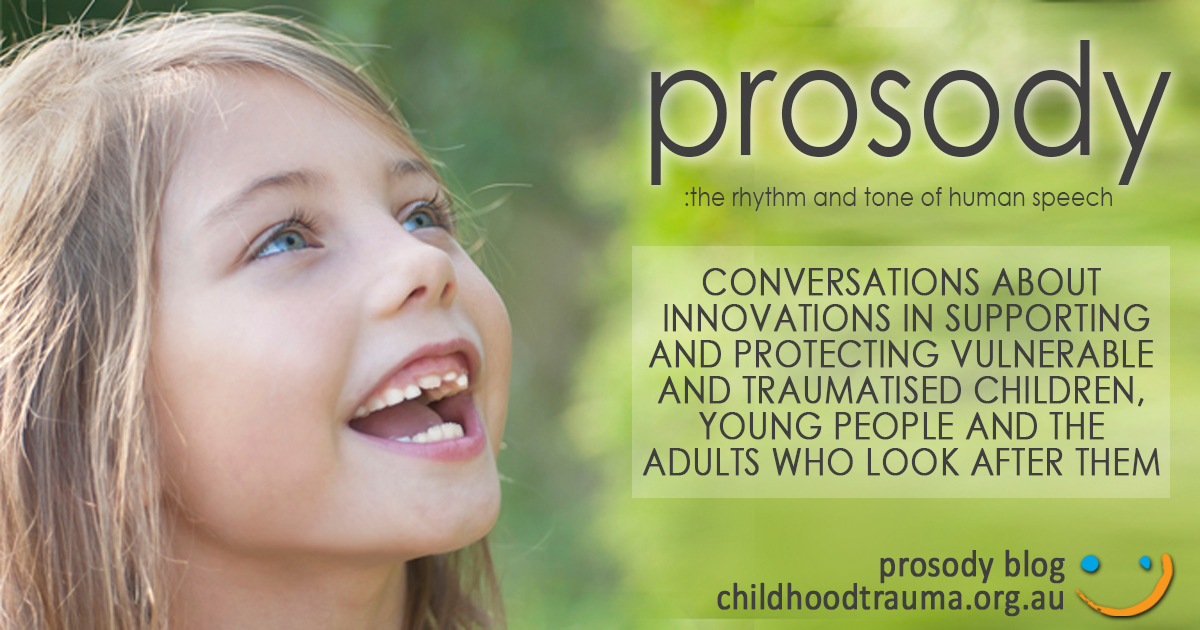
Welcome to our new blog – Prosody
This article was authored by Joe Tucci, CEO at the Australian Childhood Foundation.
Sometimes a word captures your attention. Sometimes, it is its meaning – you can sense that it holds ideas and concepts that will act as a resource to your own understanding. Sometimes, it is the way it sounds. Its tone signals its aims – it resonates between form and function.
Other times, that word is just hard to pronounce. You slow yourself down and it becomes a little easier. The more deliberate you are in pronouncing it, the better it sounds. It moves from challenging to achievable. It reflects back to you your own persistence and effort. In so doing, the word itself comes to mean more to you that its own meaning.
Prosody is exactly one of these words. In linguistics, it is defined as the patterns of stress and intonation in a language. It refers to the curves and patterns of speech – its rhythm and pitch, its tone and pace.
Steve Porges from the University of North Carolina and the originator of the Polyvagal Theory in neuroscience was the first person I ever heard use the word prosody. He uses it tellingly to convey both the complexity and the simplicity of the quality of speech of a mother with her infant in her efforts to sooth and comfort. Importantly, in his view, prosody and the musculature which can affect it is not only part of social communication, but an intrinsic part of social engagement and relationship.
After I heard it once, it was like it was everywhere.
Master dyadic therapist, Dan Hughes changes the prosody of his voice when he is talking to children and young people who have experienced trauma. It is the melodic character of his voice that is as important as the content of his words in his invitation to children and their carers to be playful in a world that is often void of opportunity for connection.
For all of these reasons, Prosody seemed to be a logical choice to name our blog. Inspired by its meaning, we have interpreted it relationally to mean more broadly the rhythm and tone of communication.
It underscores our hope that we can engage in conversations with the community of professionals who have joined us already, or come to join us along the way, in a collective process to understand children and young people, their needs, their relationships and the ways we can protect their vulnerabilities and resource their strengths. 
The Foundation’s new blog is a forum for reflection about children and young people and the nature of the relationships that they need to nurture them and help them to thrive. It will include topics on children’s rights, innovations in trauma intervention, training and professional education, child protection, out of home care, safeguarding children in organisations and preventing abuse, neglect and family violence. It will provide opportunities for you to engage in initiatives with us that are aimed at promoting reform to policies and legislation to better protect and support vulnerable children and young people. It will also offer you new and innovative resources that are developed, reviewed or sourced by us for working creatively with children, young people and families. All of these areas form the very scope of the work undertaken by the Foundation.
Children’s needs and how to best meet them will be the central and organising theme of our writing.
I hope that you will find it interesting and visit us often. And if you are so moved, you may choose to share an article or two with your own networks.
I think that we cannot talk enough about children in our community. They need all the words they can muster from the adults around them. And it is in the very contours of all our conversations – its communal prosody – that our children will find safety, understanding and belonging.
